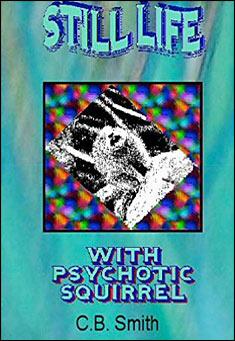When a young boy realizes that his world is upending by the minute, terrifying him beyond his coping abilities, he develops a plan of escape; an extended journey into an imaginary world where the realities are recast and transformed into a form much more palatable.
The results of this sometimes hilarious, often poignant adventure, are collected in the volume, Still Life with Psychotic Squirrel.
Excerpt:
I must confess, I am obsessed, a true obsessive, a subject controlled by his obsession. And truly I cannot wish for any other way that this, the primary obsession being a divine still life painting, brought to life early to mid 20th century but termed 19th century by the painter, my uncle, Amadeo Sosa. The artist was a painter and artist enormously gifted, an artist to whom all others could only glimpse in fragmented manner knowing that the gift by which he operated was his alone and not for distribution.
Oh, so many rapturous days were spent watching him as he worked, mixing paint, preparing the canvas, arranging his models, all leading to the final act of giving birth to a moment. Obsession rules his gifts as well as he could not be finished, could not consider his work done until he had subjected it to numerous personal viewings with a highly critical eye as he weighed line, space, color, medium, and formal arrangement, knowing that each must be executed precisely for his grand design to find life. The painting under review in this text, Still Life, was one such work subjected to rigorous qualitative analysis at his hands.
But it is one that stands above the vast majority of those in its form category. The objects chosen for inclusion are each unique and well suited to a still life rendering, though each is not what one would term the typically chosen items for this task. Gone is the bowl, the apple, the pear, the clutch of flowers, items employed in still life as a form since its inception. Selected are items that offer simplicity in the geometry of line, the horizontal and the vertical, manipulated by placement within the field of artistic vision, a line that moves and transports the viewer to places and times not immediately apparent, places and times of a powerful and deeply personal bent. Looking into the space at left and right of the picture’s center one sees the deep gray background, a color chosen not only for its neutral backdrop benefits but also for its emotional associations. A deep gray symbolizes a night in a gradual state of becoming darker, leading to its eventual destination of the blackest black. Within the world of this color anything is possible, fantastic, terrifying, all manner of imaginarium and phantasmagoria, a veritable world of the underground kingdom. What could be waiting there? This is the central question: WHAT.













